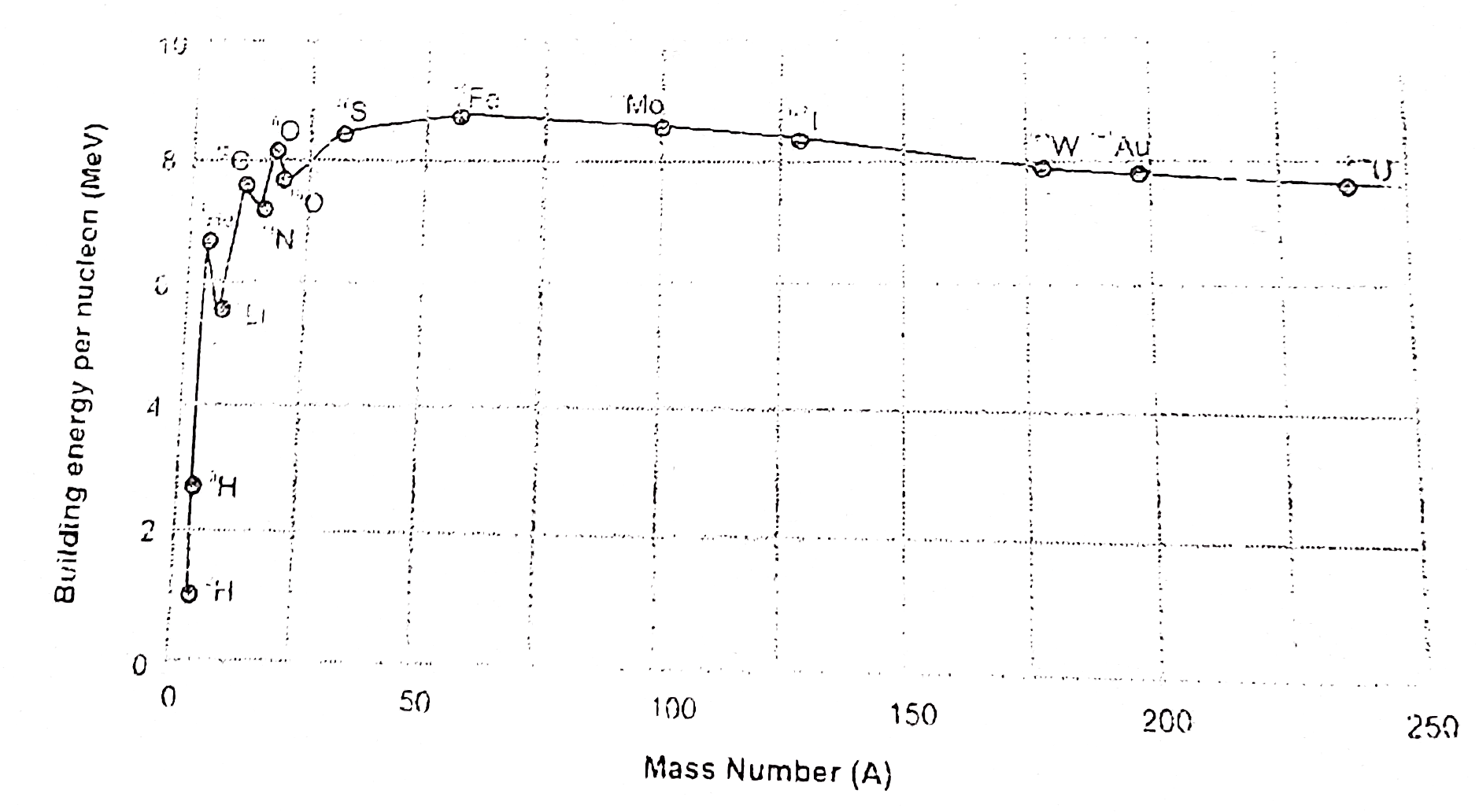Assertion : Nuclei having number about 60 are most stable.
Reason : When two or more light nuclei are combined into a heavier nucleus, then the binding energy per nucleon will increase.
If both assertion and reason are true and reason is the correct explanation of assertion
If both assertion and reason are true but reason is not the correct explanation of assertion
If assertion is true but reason is false
If both assertion and reason are false.
The correct Answer is:B
To solve the question, we need to analyze both the assertion and the reason provided.
Step 1: Analyze the Assertion
The assertion states that "nuclei having number about 60 are most stable." This is based on the concept of binding energy per nucleon. The binding energy per nucleon is a measure of how tightly the nucleons (protons and neutrons) are held together in a nucleus.
- Fact: Nuclei with mass numbers around 60 (like Iron-56) do indeed have one of the highest binding energies per nucleon, making them more stable compared to lighter or heavier nuclei.
Step 2: Analyze the Reason
The reason states that "when two or more light nuclei are combined into a heavier nucleus, then the binding energy per nucleon will increase." This statement is related to nuclear fusion.
- Fact: In nuclear fusion, when light nuclei combine to form a heavier nucleus, the binding energy per nucleon does generally increase up to a certain point (around mass number 60). This is why fusion releases energy.
Step 3: Determine the Relationship
Now we need to determine if the reason is the correct explanation for the assertion.
- While both statements are true (the assertion is true because nuclei around mass number 60 are stable, and the reason is true because fusion increases binding energy per nucleon), the reason does not directly explain why nuclei around mass number 60 are the most stable. The stability is a result of the binding energy characteristics of those specific nuclei, not directly due to the process of fusion.
Conclusion
- The assertion is true.
- The reason is true, but it does not explain the assertion.
Thus, the correct answer is that both the assertion and reason are true, but the reason is not the correct explanation of the assertion.
Final Answer
The correct option is: Both the assertion and reason are true, but the reason is not the correct explanation of the assertion.
---
The assertion states that "nuclei having number about 60 are most stable." This is based on the concept of binding energy per nucleon. The binding energy per nucleon is a measure of how tightly the nucleons (protons and neutrons) are held together in a nucleus.
The reason states that "when two or more light nuclei are combined into a heavier nucleus, then the binding energy per nucleon will increase." This statement is related to nuclear fusion.
Now we need to determine if the reason is the correct explanation for the assertion.
- The assertion is true.
- The reason is true, but it does not explain the assertion.
The correct option is: Both the assertion and reason are true, but the reason is not the correct explanation of the assertion.
Similar Questions
As the mass number A increases, the binding energy per nucleon in a nucleus.
View SolutionWhen the number of nucleons in a nuclues increases the binding energy per nucleon
View SolutionIf two light nuclei are fused together in nuclear reaction, the average energy per nucleon
View SolutionWhen two nuclei (with A=8) join to form a heavier nucleus , the binding energy (B.E) per nucleon of the heavier nuclei is
View SolutionAssertion: The nuclear energy can be obtained by the nuclear fission of heavier nuclei as well as by fusion of lighter nuclei.
Reason: As the mass number increases, the binding energy per nucleon, first increases and then decreases.
View SolutionStatement-1:In a spontaneous fission reaction a heavy nucleus is split into two medium sized ones, each of the new nuclei will have more binding energy per nucleon than the original nucleus
Statement-2:Joining two light nuclei together to give a single nucleus of medium size means more binding energy per nucleon in the new nucleus .
View SolutionFour nuclei of an elements undergo fusion to form a heavier nucles, with release of energy. Which of the two - the parent or the daughter nucleus - would have higher binding energy per nucleon ?
View SolutionAssertion : In a nuclear process energy is released if total binding energy of daughter nuclei is more than the total binding energy of parent nuclei.
Reason: If energy is released then total mass of daughter nuclei is less than the total mass of parent nuclei.
View SolutionAssertion : In a nuclear process energy is released if total binding energy of daughter nuclei is more than the total binding energy of parent nuclei.
Reason: If energy is released then total mass of daughter nuclei is less than the total mass of parent nuclei.
View SolutionDraw the graph showing thervariation of binding energy per nucleon with mass number. Give therason for the decrease of binding energy per nucleon for nuclei with high mass numbers.

The binding energy per nucleon for nuclei with high mass number is low due to the large coulomb repulsion between the protons inside these nuclei.
View Solution
